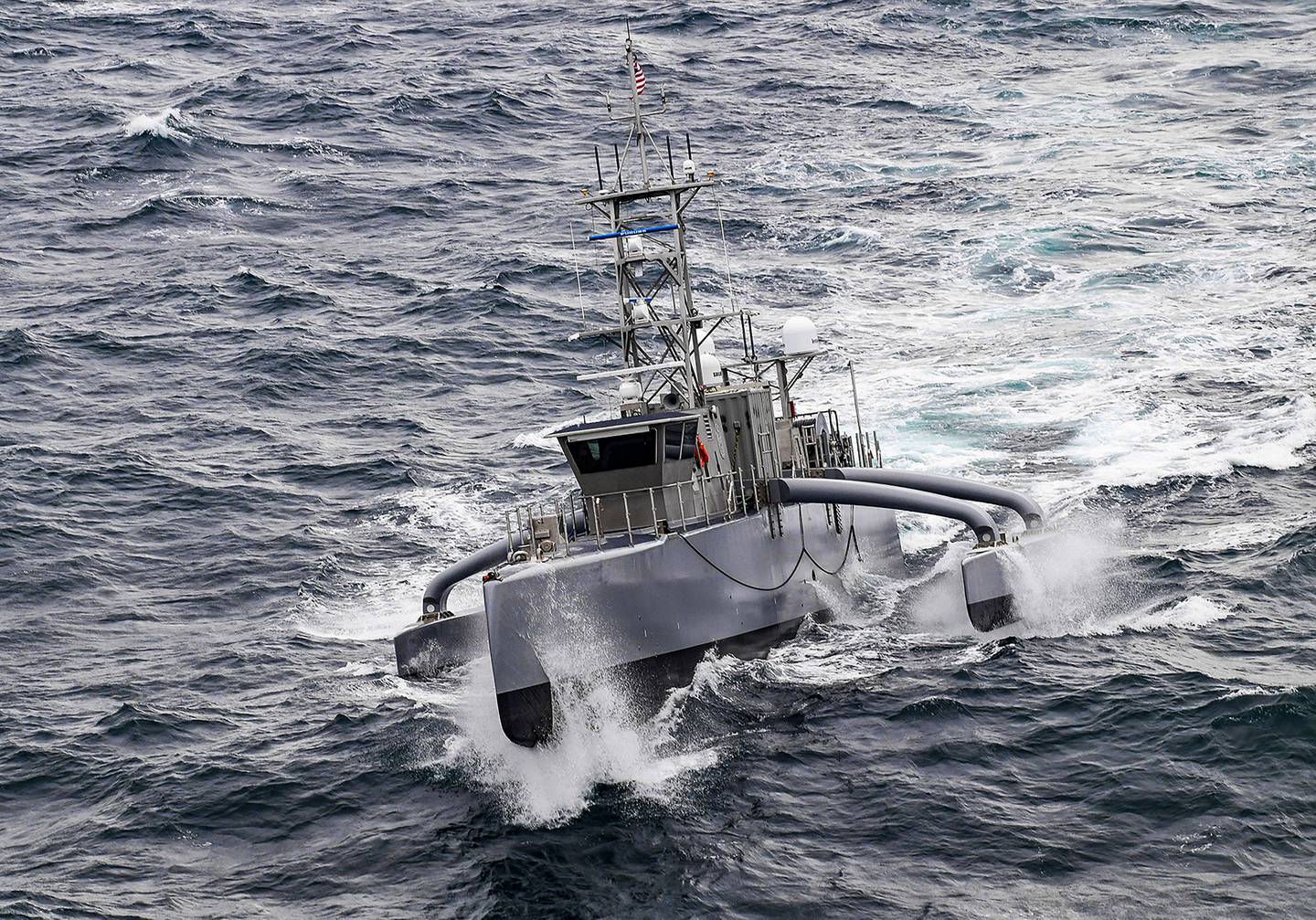ARLINGTON, Va. — The U.S. Navy is firming up plans for the Medium Unmanned Surface Vessel, after previously questioning the need or utility of the system.
The Navy has seven large and medium USV prototypes in its custody or on contract, and already these vessels have shown the value of having an unmanned craft tote around payloads related to intelligence, surveillance, reconnaissance and targeting, leaders said.
Meanwhile, small USVs operating as part of Task Force 59 are conducting ISR missions of their own, in much greater numbers due to their size and low cost.
The Navy had already announced its commitment to a Large USV program.
Chief of Naval Operations Adm. Mike Gilday previously said Task Force 59′s success using small USVs to sense the battlespace and create a common operating picture for the U.S. Navy and its partners “has changed my thinking on the direction of unmanned.” If small USVs can do this ISR mission more cheaply, he said, “it will cause us to consider numbers and what potential payloads they’re going to have” for medium ones.
After experimentation last year, including four medium and large USV prototypes participating in the Rim of the Pacific exercise in Hawaii, Rear Adm. Fred Pyle, who leads surface warfare on the CNO’s staff, said “we are very excited about the prospects of what MUSV can bring.”
Through USV Division One within the Surface Development Squadron, Pyle explained, “we are doing a lot of storming and norming in this space of what the [command and control] looks like, how we do the operational employment, and what the future of the medium unmanned platform is.”
He told Defense News on Jan. 11 at the annual Surface Navy Association conference that the MUSV conducting cyber, surveillance and targeting missions proved “advantageous.”
“We’ve learned a lot from recent events such as RIMPAC, and we’re going to continue to take opportunities of exercises and fleet experimentation to determine what’s the best capability to go in there to support distributed maritime operations,” he added.
The Navy intends to begin the LUSV program in fiscal 2025, but has not publicly discussed potential timing of an MUSV program — particularly amid the conversation about whether the service wants a medium versus a small USV for the ISR mission set.
“We have investments in medium unmanned surface vessels and we are moving out on it. The [Program Executive Office Unmanned and Small Combatants] and I are lockstep, and we’ve got very good dialogue with the fleet on what we want to accomplish with this platform,” Pyle said during a panel discussion about moving these vessels from experimentation into fleet operations.
The head of USV Division One, Cmdr. Jeremiah Daley, told Defense News on Jan. 12 at the conference that, whereas USV operations at RIMPAC and previous advanced-phase predeployment training focused on a single destroyer paired with one drone, this year will host more complex and realistic scenarios.
Planned events with the soon-to-be five total USVs in his division will “increase the scope and complexity of those events, integrated both with individual ships, with Marine Corps and with carrier strike groups,” he said.
“We’re now tying directly into surface action group and carrier strike group operations” as they simultaneously conduct multiple kinds of operations and rely on USV payloads to sense and affect the battlespace.
Asked about the Navy’s comfort in operating unmanned craft alongside crewed ships, Daley replied: “Our command is comfortable, but the real customer is the fleet. The more frequently we engage the fleet directly, with their operations and their missions and their exercises and their training objectives, the more comfortable the fleet will be with normalizing USV operations with the larger fleet. That’s what our goal is this year.”

All seven of the planned prototypes — the Sea Hunter and Sea Hawk medium USVs, four Overlord large USVs, and another medium USV prototype on contract with L3Harris Technologies — are technically medium USVs due to their length. The Large USV program of record will involve a longer hull that can store and launch missiles, acting as an adjunct magazine for the surface fleet.
Despite the smaller size of these prototypes and their current use of non-kinetic payloads, Daley said his division’s work is reducing risk for the LUSV program, not just informing the path forward for the MUSV program.
The most recently delivered prototype, the Mariner, has the USV version of the integrated combat system and will help sailors and Program Executive Office Integrated Warfare Systems learn more about this capability before the LUSV is designed and delivered.
Daley also said his division is working on the development of tactics and concepts of operations, some of which would apply to both large and medium USVs.
Gilday said Jan. 10 at the conference that he expects the first USV to deploy with a carrier strike group in 2027 to demonstrate “meaningful” manned-unmanned teaming.
Megan Eckstein is the naval warfare reporter at Defense News. She has covered military news since 2009, with a focus on U.S. Navy and Marine Corps operations, acquisition programs and budgets. She has reported from four geographic fleets and is happiest when she’s filing stories from a ship. Megan is a University of Maryland alumna.








